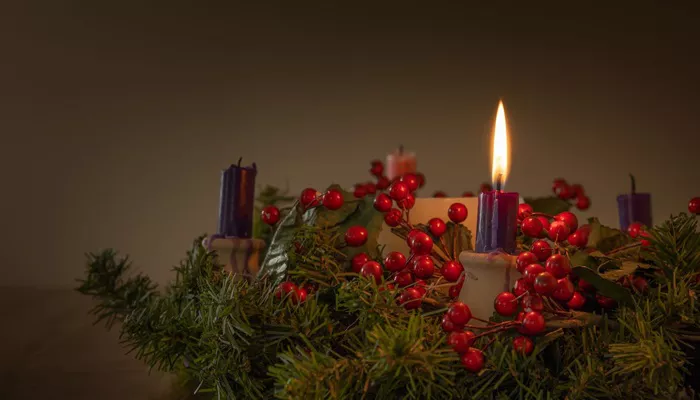The association of gnomes with Christmas is a fascinating blend of folklore, cultural traditions, and modern interpretations. Gnomes, often depicted as small, bearded figures wearing pointed hats, have evolved from ancient mythological beings into beloved symbols of the holiday season. This article delves into the historical roots of gnomes, their transformation over time, and the reasons behind their current popularity during Christmas.
Historical Origins of Gnomes
Gnomes trace their origins back to Renaissance magic and alchemy, where they were introduced by the Swiss physician Paracelsus in the 16th century. He described them as diminutive earth spirits who guarded treasures and mines. According to Paracelsus, gnomes were not merely whimsical creatures but rather integral parts of the natural world, embodying the earth’s hidden riches and mysteries2. This concept of gnomes as guardians of wealth and nature laid the groundwork for their later cultural adaptations.
In German folklore, gnomes are often associated with household spirits known as “Hausgeister.” These spirits were believed to protect homes and families, ensuring prosperity and good fortune. Gnomes were depicted as benevolent beings who helped with household chores and agricultural tasks in exchange for offerings of food or drink left out by the family. This nurturing aspect of gnome mythology contributed to their positive image in popular culture1.
Gnomes in Scandinavian Folklore
In Scandinavian countries, gnomes are closely related to “tomte” or “nisse,” figures that serve similar protective roles. These beings are often depicted as small men with long beards and red caps, living in barns or farmhouses. They are believed to bring good luck and prosperity to families, particularly during the winter months when food was scarce4. The tradition of leaving out food for these spirits during Christmas time further solidified their association with the holiday.
The tomte’s role in Scandinavian culture has been influential in shaping the modern image of Christmas gnomes. As families began to celebrate Christmas with more elaborate decorations and traditions, these figures transitioned from folklore into festive decorations. The tomte’s connection to agriculture and protection made them ideal symbols for a holiday centered around family gatherings and goodwill.
Physical Characteristics and Symbolism
The physical appearance of gnomes plays a significant role in their association with Christmas. Their round bellies, long white beards, bulbous noses, and pointed hats evoke a sense of warmth and cheerfulness reminiscent of Santa Claus. This resemblance is not coincidental; both figures embody the spirit of giving and kindness that is central to Christmas celebrations1.
The pointed hat is particularly symbolic, often interpreted as a representation of wisdom or a connection to the mystical realms. In many cultures, pointed hats are associated with magical beings—whether witches or wise men—further enhancing the enchanting qualities attributed to gnomes. Their small stature allows them to be seen as approachable figures who bring joy rather than fear.
Modern Interpretations and Popularity
In recent years, gnomes have surged in popularity as holiday decorations. They can be found adorning mantles, centerpieces, and even Christmas trees. Their quirky appearance makes them ideal subjects for DIY craft projects, allowing families to create personalized decorations that reflect their unique styles1. The rise of social media platforms has also contributed to this trend, with users sharing photos of their festive gnome displays.
Gnome-themed merchandise has expanded beyond traditional figurines to include a variety of items such as ornaments, gift wrap, and even clothing. This diversification has made it easier for people to incorporate gnome motifs into their holiday celebrations. The playful nature of gnomes resonates with both children and adults alike, making them a beloved symbol during this festive season.
Cultural Connections: Gnomes and Santa Claus
One cannot discuss Christmas gnomes without mentioning Santa Claus. The similarities between these two figures have led to speculation about their interconnectedness. Both embody generosity and kindness; while Santa is known for delivering gifts on Christmas Eve, gnomes are often seen as helpers who assist Santa in his endeavors1.
In some cultures, elves—who share many characteristics with gnomes—are believed to help Santa prepare for Christmas by making toys or tending to reindeer. This collaborative spirit reinforces the idea that gnomes are integral to the holiday season’s magic.
See also: Why Poinsettias for Christmas?
Gnome Traditions Around the World
Gnome-related traditions vary across different cultures but share common themes of protection and generosity:
Scandinavia: As mentioned earlier, tomte or nisse play crucial roles in ensuring good fortune for families during winter months.
Germany: Gnome-like figures known as “Knecht Ruprecht” accompany St. Nicholas on his gift-giving rounds during Advent.
Eastern Europe: In some Slavic countries, similar creatures called “domovoi” protect homes from misfortune while promoting harmony within households.
These traditions highlight how gnome-like figures have been woven into various cultural narratives surrounding Christmas celebrations globally.
Conclusion: The Enduring Charm of Christmas Gnomes
The association between gnomes and Christmas is a rich tapestry woven from historical roots, folklore, cultural practices, and modern interpretations. Their evolution from ancient earth spirits to festive symbols reflects humanity’s enduring fascination with these whimsical beings.
As we embrace the spirit of giving during the holiday season, gnomes serve as delightful reminders of kindness and generosity. Whether through traditional decorations or contemporary adaptations, they continue to bring joy to our homes each December. Their charm lies not only in their appearance but also in the stories they tell—of protection, good fortune, and the magic that surrounds this special time of year.
In summary, Christmas gnomes represent a unique intersection between history and modern culture. As they occupy our mantles and hearts during this festive season, they remind us that even the smallest beings can bring great joy and warmth into our lives.
Related topics:

